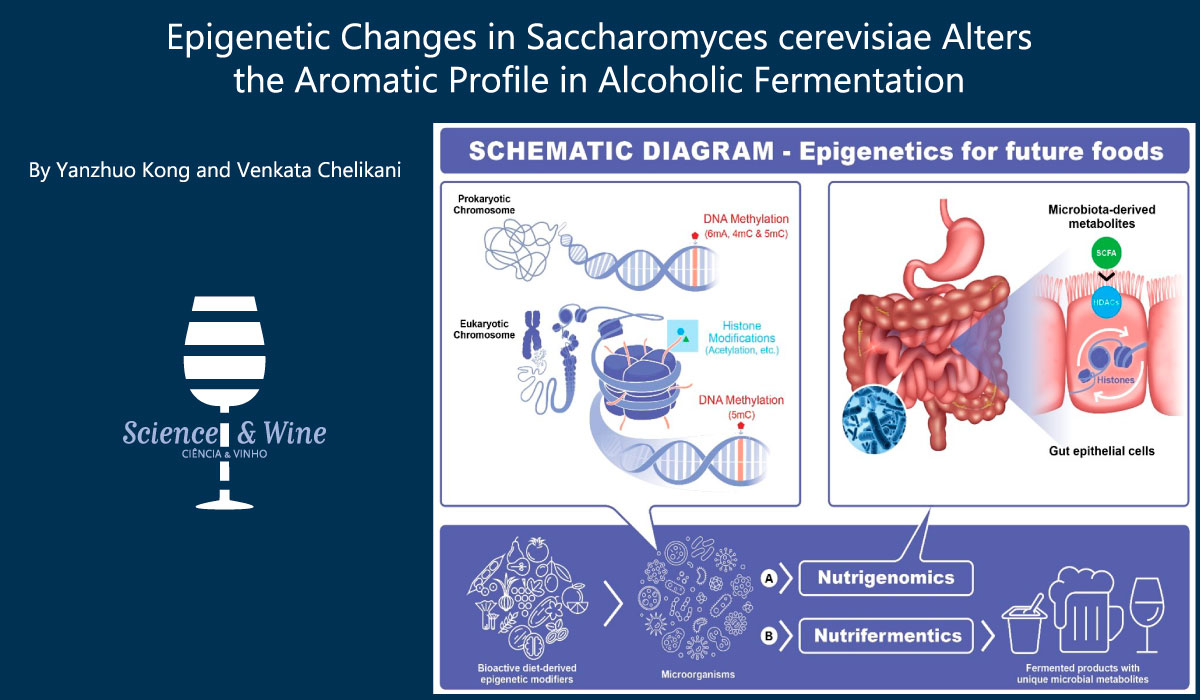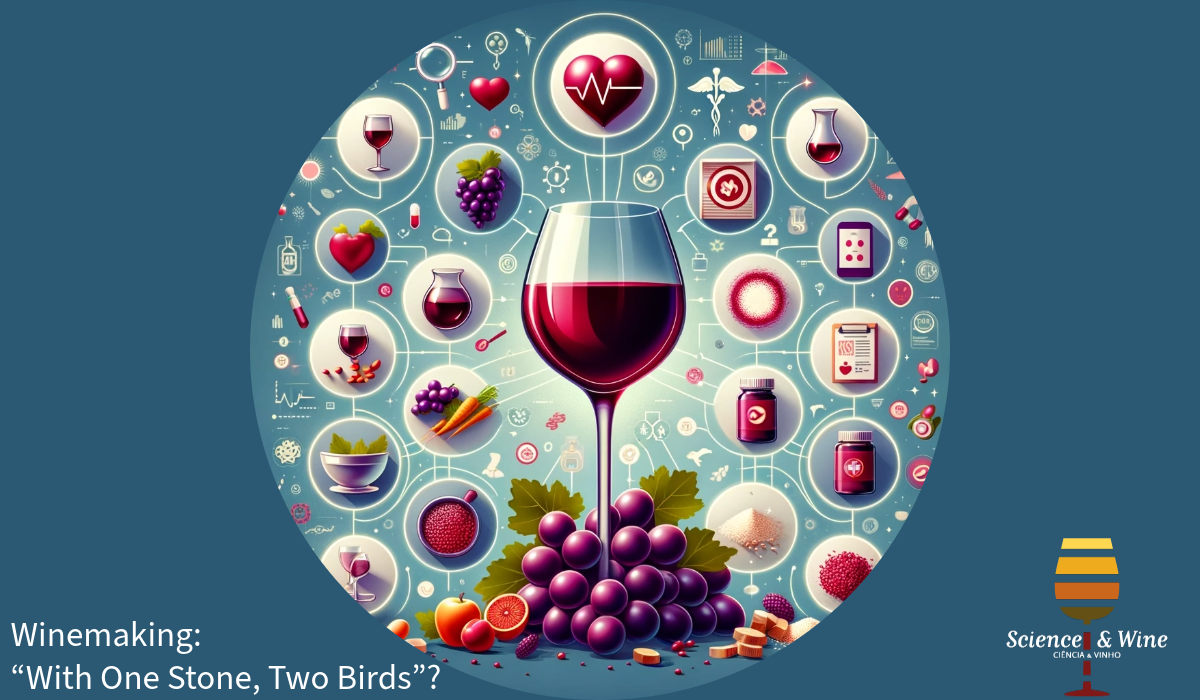The paper titled “Winemaking: ‘With One Stone Two Birds’? A Holistic Review of the Bio-Functional Compounds, Applications and Health Benefits of Wine and Wineries’ By-Products” provides a comprehensive review of the health benefits and applications of bio-functional compounds found in wine and by-products of wineries. It explores the nutritional value, bio-functional components, and health-promoting properties of these compounds, particularly their antioxidant, anti-inflammatory, and antithrombotic effects. The paper also discusses the beneficial effects of moderate wine consumption as part of a balanced diet and examines the potential of wineries’ by-products in developing functional foods, supplements, and nutraceuticals. Limitations and future perspectives of these bioactive compounds are also addressed.

Application of White-Wine-Pomace-Derived Ingredients in Extending Storage Stability of Fresh Pork Burgers
This study investigated the use of white wine pomace (a byproduct of wine production) as a preservative in pork burgers. It assesses the impact of this ingredient on various quality aspects of meat, including microbial growth, color stability, oxidation, and overall sensory attributes, over a period of refrigerated storage. This study aimed to offer an eco-friendly alternative to conventional preservatives such as sulfites, assessing whether wine pomace can effectively extend the shelf life and maintain the quality of pork burgers. These results indicate that while wine pomace shows some antioxidant properties, its effectiveness in inhibiting microbial growth and preserving the color of pork burgers is limited compared to traditional sulfite preservatives.

DNA-based micro-total analysis system, a breakthrough in wine traceability and authenticity
For the first time, it was presented a DNA-based analytic tool for grapevine varietal discrimination using an integrated portable biosensor based on a monolayer graphene field-effect transistor array. The system comprises a wafer-scale fabricated graphene chip operated under liquid gating and connected to a miniaturized electronic readout. The platform can distinguish closely related grapevine varieties, thanks to specific DNA probes immobilized on the sensor, demonstrating high specificity even for discriminating single-nucleotide polymorphisms, which is hard to achieve with a classical end-point polymerase chain reaction or quantitative polymerase chain reaction. The reported biosensor provides a promising way toward developing decentralized analytical tools for tracking wine authenticity at different points of the food value chain, enabling data transmission and contributing to the digitalization of the agro–food industry.

The enigm of natural wines: a first step to shed light on them
Natural wine (NW) lacks an official or agreed definition, but it can be generally described as wine produced with organic or biodynamic grapes with minimal intervention in the cellar, and with minimal or no use of oenological additives. The present study aimed to test the hypotheses that self-defined NWs differ from conventional wines (CW) in their chemical composition and main sensory characteristics. The levels of conventional oenological parameters, turbidity, biogenic amines, ochratoxin A, ethyl carbamate, sulphites, chlorides, some metals, major, trace and Strecker aldehyde volatile compounds were determined in 28 wines, including natural and conventional Spanish commercial white wines. Wines were also sensory described following a labelled free sorting task.

Effect of mannoproteins from different oenological yeast on pigment composition and color stability of red wine
In this work, MP-rich extracts from Saccharomyces and non-Saccharomyces yeasts were obtained by cell sonication and were characterized. The extracts were added to a red wine and color and pigment composition modifications were evaluated by CIELAB parameters and HPLC-DAD-MS, respectively, after cold treatment (to provoke colloidal instability) and storage at room temperature (to accelerate wine aging). Results indicate that the MP-rich extracts showed differences in their composition and in the structure of the MPs depending on the yeast species. They also had different effects on the stability of wine pigments, being the extract obtained from Torulaspora delbrueckii the one that provided the best results, by contributing to the colloidal and chemical stability of the coloring matter. Wines added with this extract showed concentrations of p-coumaroylated and caffeoylated anthocyanins 33.40% higher than the control wine after 4 days of storage at 4 °C.

Is there a mutual methodology among Life Cycle Assessment studies in the wine supply chain?
When talking about environmental and sustainability topics, the wine sector plays a fundamental role ensuring that wine remains not only economically but also environmentally sustainable, hence the importance of conducting analyses to measure the impact of food production through Life Cycle Assessment tool.

Epigenetic Changes in Saccharomyces cerevisiae Alters the Aromatic Profile in Alcoholic Fermentation
This post is about a post that investigates and reports for the first time utilizing a non-GMO approach to alter the fermentation process of Pinot Noir wines. The authors experimentally demonstrated that certain dietary compounds possess histone deacetylase (HDAC) inhibiting activity and can alter the wine characteristics by potentially altering yeast gene transcription, which was resulted from epigenetic effects. They have previously proposed the term “nutrifermentics” to represent this newly proposed field of research that provides insights on the effect of certain dietary compounds on microbial strains and their potential application in fermentation. This technological approach is a novel way to manipulate microorganisms for innovative food and beverage production with quality attributes catering for consumer’s needs. Using a multidisciplinary approach with an emphasis on food fermentation and biotechnology, this study will be substantially useful and of broad interest to food microbiologists and biotechnologists who seek for innovative concepts with real-world application potential.

Hydrophobic Eutectic Solvent-Based Dispersive Liquid-Liquid Microextraction Applied to the Analysis of Pesticides in Wine
A green solvent-based DLLME/HPLC-MS method for the determination of 19 pesticides in wine samples has been developed. From the analysis of 11 commercial wines it was found that just in a bio sample the target compounds were not detectable or lower than quantification limit; as for the other samples, the most widespread and abundant pesticides were methoxyfenozide and boscalid, but their levels were much lower than the relative maximum residue levels.

The wine industry by-products: applications for food industry and health benefits
Each year, 20 million tons of wine by-products are generated, corresponding to 30% of the total quantity of vinified grapes. Wine by-products are a source of healthy bioactive molecules, such as polyphenols and other molecules (pigments, fibers, minerals, etc.). The abundance of bioactive compounds assures a promising future for nutritional foodstuff production. Wine by-products can be used to fortify aromatized waters and infusions, bread, pasta, dairy products, alcohol, sugary beverages, and processed foods. These innovative products are part of the Mediterranean Diet and are of great interest to both human and environmental health. Read more that http://science-and-wine.com/

Improved sustainability in wine industry byproducts: a scale-up and economical feasibility study for high-value compounds extraction using modified SC-CO2
This post summarizes a study carried out with the aim of optimizing the operating conditions and to study the scale-up and the feasibility of the supercritical fluid extraction process for polyphenols from grape pomace, the main solid byproduct of the wine industry. An economic evaluation of the process indicated the feasibility of an industrial SFE plant with a capacity of 500 L for producing in 60 min an extract with an expected phenolics’ concentration of approximately 133 gGAE/kg extract at an estimated 67€ /kgextract cost of manufacturing. Notably, all values are better than those currently reported in the literature

